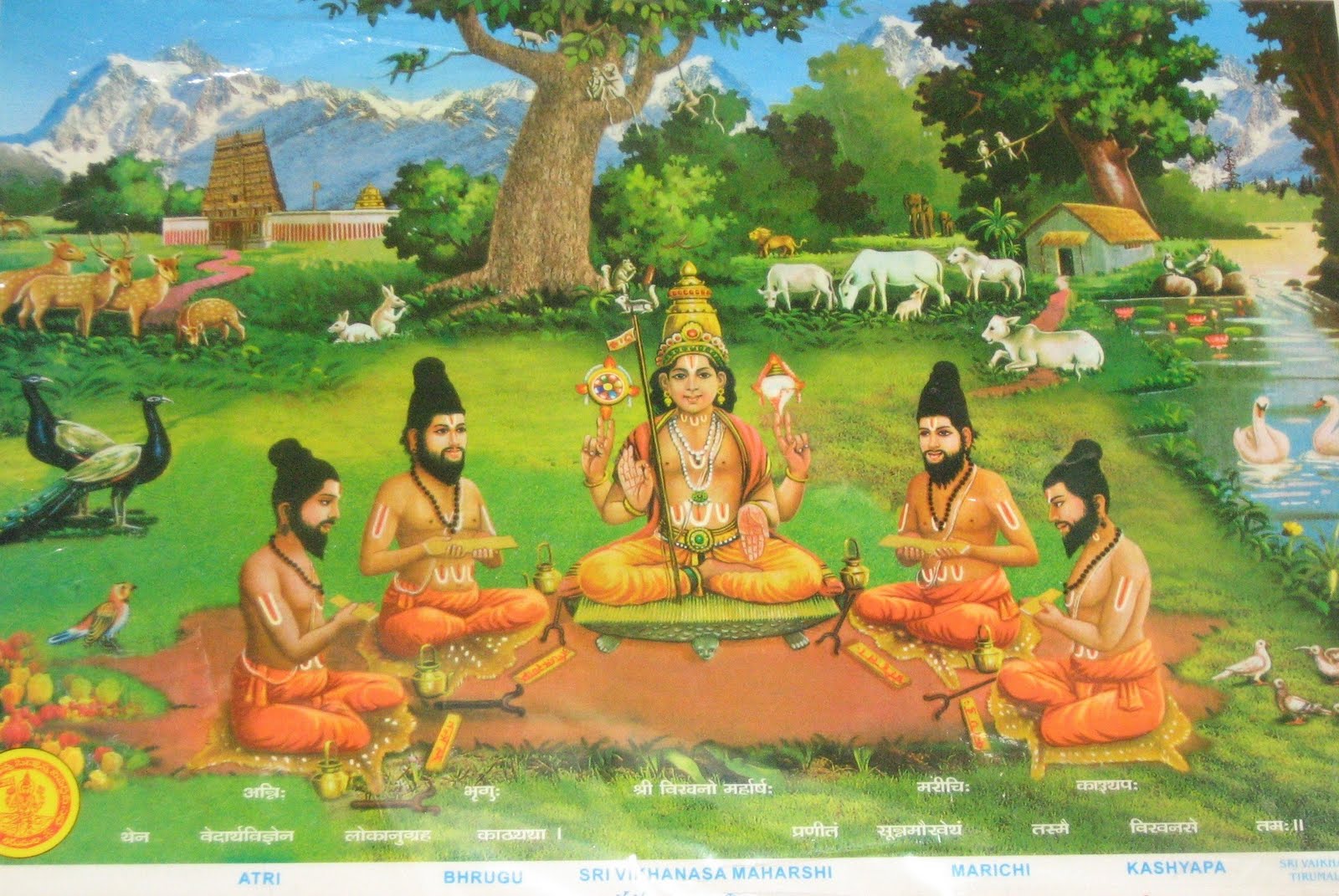Mahabharata’s Adi parva contains a quote:
Yadi haasti tadanyatra yannehaasti na tat kwachit
The meaning of this quote is, “Whatever is contained in Mahabharata may be found in other places but there is nothing elsewhere in the world, which is not in Mahabharata”. This quote applies to the Vedas too.
Vedas are ancient doctrines of great knowledge. They reflect the living habits of ancient people (our ancestors), their thoughts, customs etc. Vedas also contain the methods and measures adopted for health care and treatment. Each Veda has contributed greatly to the well being of the Vedic society. Ayurveda is based on the Atharvana Veda, which is the most recent among the four Vedas. This text completely deals with the well being of a person. It is the oldest science to describe health and disease factors.
In Vedic times there were great scholars who dealt with the health aspect of humans, animals and plants. They were well versed in the anatomy and physiology of humans and animals like horse, goat, and elephants (Hasti ayurveda, Vrukshayurveda, and so on). They included astrology while treating the diseased person.
Schools of Vaidyas
There were two main schools of vaidyas (doctors); one was the school of Patanjali where general medicine was followed. Acharya Charaka was considered as the best among them. The second school concentrated on surgery and was called Dhanvantari school, in which Acharya Sushruta was the most famous. Even today, he is considered the father of surgery. He conducted very complex plastic surgeries during those ancient times, thousands of years ago, which surgeons today are only just discovering!
Modes of Healing
In the Vedic period, mainly herbs were used for treatment, along with some purified metals like mercury, gold, silver and mica and also select animal products. During the period of early Vedas like Rig Veda, health aspects were mixed up with generic topics of living. But, in due course, Ayurveda acharyas started maintaining separate documentation on health science. This literature came to be called Samhitas.
Branches of Ayurveda
Ayurveda has eight branches or Ashtanga Ayurveda. They were general medicine, pediatrics, psychiatry, ENT, surgery, toxicology, geriatrics, eugenics and aphrodisiacs. The main doctrines written in Ayurveda were Charaka Samhita, Sushruta Samhita and Ashtanga Hrudaya.
The name ‘Ayurveda’ itself means that it is a the science of life. ’Ayu’ means longevity or lifespan and ‘Veda’ means science. Definition of Ayurveda according to Acharya Charaka is:
Hitaahitam sukham dukham aayustasya hitaahitam
Maanamch tattcha yatroktam aayurvedaha sa uchyate(Charaka Sutra sthaana1/40)
The science which changes Ahitaayu (unhealthy life) to Hitaayu (healthy life) from Dukhaayu (miserable life) to Sukhayu (pleasant life) is Ayurveda.
Principles of Ayurveda
Definition of health according to Ayurveda:
Sama dosha samaagnishcha sama dhaatu malakriya
Prasanna aatmendriya manaha swasta ityabhidiyate
(Sushruta Sutra sthaana 15/41)
Meaning, “The person is called healthy when there is balance in bio energies, digestive fire, body tissues and excretion from the body; pleasant soul, sensory organs, and mind.”
If a person is considered as healthy, then he should pass all the below mentioned calibers. They are:
- Balanced doshas (vaata, pitta, kapha – bio energies from which human body is formed)
- Dhatus (seven tissues in the body like blood, lymph, muscles, bones, bone marrow etc.)
- Malas (excretions like stools, urine and sweat)
- Spiritual (pleasant soul, active sense organs and mind)
The main principle of Ayurveda is the prevention of illness and subsequently, treating the disease. In all the Samhitas, the initial chapters contained methods, which if followed, a person would live healthily. They were Dinacharya or daily routines, Ritucharya or food and lifestyle according to the seasons and Sadvrutta or making behavioral changes for mental and spiritual health. After explaining these methods, Samhitas clearly says that people who do not follow these procedures will become diseased, explaining the causes and treatments for the diseases.
This science not only deals with our physical health but also mental and spiritual aspects. The main aim of Ayurveda is:
Dharmaartha kaama mokshaanaam aarogyam mulamuttamam
(Charaka Sutra sthaana 1/15)
During the Vedic times, each individual born on earth had some duties to fulfill
- Dharma – Doing good deeds like taking care of elders, serving needy persons etc.
- Artha – Gaining wealth
- Kama – Fulfilling desires
- Attaining Moksha – Becoming one with the almighty after death
To the fulfillment of dharma (duty), artha (wealth), kama (sex) and moksha (liberation) the person should have physical mental and spiritual health. Following Ayurveda leads to compete health.
The main principles of Ayurveda are illustrated in this hymn:
Prayojanam cha asya swasthasya swaasthya rakshanam
Aaturasya vikaara prashamanam cha
(Charaka Sutra sthaana 30/26)
Meaning, “Utility of this science is protection of health of a healthy person, then treating the diseased.”
For the health of mind, sense organs and soul, Bhagavad Gita is considered the best medicine, apart from Yoga. As per Acharya Patanjali: “yogena chittasya” which means yoga is for the mind (Yoga Vaarthika). The great scholars of the Vedic times studied every aspect of human life holistically while framing the rules for a healthy society. Hence the same are still applicable and relevant even after thousands of years.





0 Comments